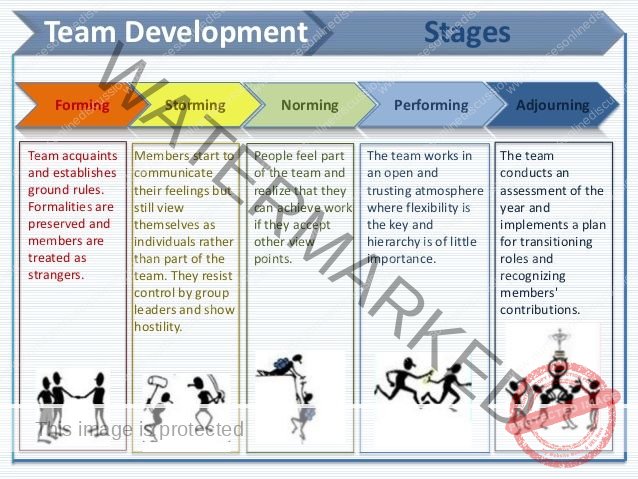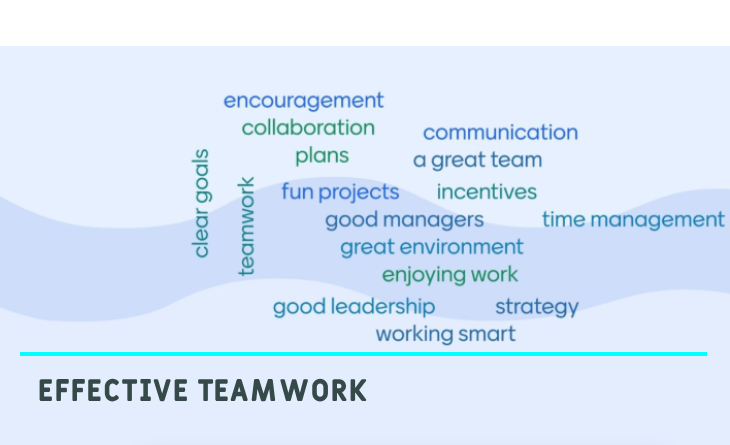Leadership in Healthcare
Subtopic:
Teamwork / Team Planning / Team progress

Defining a Team:
A team is composed of a small group—typically 5 to 10 individuals—who bring together diverse talents to achieve a shared objective. They operate with agreed-upon performance targets and a unified methodology, holding each other responsible for collective success. Essentially, it’s about interdependence and working together towards a common aim.
Small Size: Optimal team size is usually between 5 and 10 members for effective collaboration.
Varied Skills: Teams benefit from a balanced mix of skills and personality types to tackle diverse tasks.
Shared Purpose & Goals: A clear, common purpose and specific, measurable goals are crucial for team direction.
Unified Approach: Team members need to agree on roles, responsibilities, and a common strategy for achieving goals.
Mutual Responsibility: Team members are accountable to each other, fostering commitment and building trust.
In simpler terms, a team involves two or more people working together in a coordinated way to reach a shared goal. In healthcare, a health team is dedicated to a common health objective. This includes various professionals like doctors, nurses, and support staff working together.
Team Planning:
Team planning is the systematic process of creating strategic and operational plans for a team. It ensures that the team’s efforts are in line with broader organizational aims.
Teamwork:
Teamwork is the dynamic process where individuals actively collaborate to achieve common objectives.
Groups vs. Teams: Key Differences
| Feature | Group | Team |
| Focus | Clearly defined area of attention | Shared leadership and responsibilities |
| Leadership | Designated leader | Shared among members |
| Accountability | Individual | Both individual and collective |
| Purpose | Aligns with organization’s overall mission | Specific team purpose contributing to mission |
| Work Output | Individual deliverables | Collective, joint work products |
| Meetings | Structured, efficient sessions | Open discussions, problem-solving focus |
| Performance Measurement | Indirectly assessed through individual impact | Directly measured by team’s collective outcomes |
| Decision Making | Discussion, decision, then delegation | Collaborative discussion, decision, and joint execution |

Stages of Team Development: Tuckman’s Model
Tuckman’s Stages describe the typical phases a team goes through as it develops. These stages are: Forming, Storming, Norming, Performing, and Adjourning. As teams mature, relationships strengthen, skills improve, and leadership becomes more shared and collaborative.
Forming: The team’s initial stage involves structuring and bringing members together. It’s a period of transition as individuals adapt to being part of a group. Uncertainty about roles is common. Focus is on building relationships and establishing trust. Team leaders facilitate introductions and foster a positive atmosphere.
Storming: Conflicts and disagreements may emerge as team members express ideas. This stage involves competition and potential power struggles. Team leaders must manage conflict and promote clear communication to move the team forward.
Norming: Conflicts begin to resolve as the team establishes norms and rules for collaboration. Team members develop cohesion and a collaborative spirit. Roles become clearer, and trust deepens. Leaders should encourage open communication and support team progress.
Performing: The team operates at peak efficiency. Members work smoothly and effectively towards goals with high levels of trust, collaboration, and responsibility. Leaders can take a step back, offering guidance as needed, as the team is largely self-managing.
Adjourning: The team completes its task and disbands. This stage is important for reflection on achievements and learning from the experience. It’s a time to celebrate successes and identify areas for future improvement.
Roles of a Team Leader
Team leaders play a crucial role in team effectiveness and success:
Selection Involvement: Participate in choosing team members, offering insights on necessary skills and qualities.
Maintain Standards and Order: Uphold team standards and ensure adherence to guidelines and protocols.
Duty Allocation and Scheduling: Assign tasks based on skills, ensuring balanced workloads and clear role understanding.
Resource Management: Oversee and optimize resource use to support team goals effectively.
Strategy and Planning Guidance: Direct team strategy development, aligning efforts with organizational objectives.
Team Spokesperson/Negotiator: Represent the team to stakeholders, advocating for team needs.
Open Communication System: Establish and maintain transparent communication, encouraging dialogue and information sharing.
Follow-up and Accountability: Track progress, ensure deadlines are met, and promote proactive follow-up by team members.
Objective and Policy Clarity: Ensure team members understand goals and organizational guidelines.
Goal Setting: Define and communicate clear, achievable goals.
Direction Provision: Offer guidance and ensure role clarity for all members.
Task Delegation: Assign tasks based on individual strengths for efficient workload distribution.
Progress Monitoring: Track project progress and address issues promptly.
Communication Facilitation: Promote open communication, collaboration, and conflict resolution.
Coaching and Mentoring: Support member development, offering guidance and mentorship.
Performance Management: Assess performance, provide feedback, and address issues constructively.
Resource Management: Allocate resources efficiently to support team tasks.
Problem Solving: Identify and resolve obstacles to maintain progress.
Decision Making: Make informed decisions based on expertise and team input.
Motivation and Inspiration: Foster a positive environment that encourages innovation and productivity.
Relationship Building: Build strong relationships within the team and with stakeholders.
Continuous Improvement: Encourage process improvement and performance enhancement.
Team Representation: Advocate for team needs and interests within the organization.
Benefits of Effective Teamwork
Teamwork offers numerous advantages in the workplace:
Improved Problem Solving: Diverse perspectives lead to more creative and effective solutions.
Increased Efficiency: Task division and collaboration accelerate project completion.
Healthy Competition: Constructive competition drives excellence and motivation.
Stronger Relationships: Collaboration builds bonds and understanding among team members.
Utilizing Strengths: Teamwork leverages individual talents for collective benefit.
Enhanced Morale: Empowerment and shared responsibility improve job satisfaction and reduce turnover.
Innovation and Creativity: Diverse ideas foster a creative and innovative environment.
Learning and Growth: Knowledge sharing promotes personal and professional development.
Increased Job Satisfaction: Feeling valued and engaged boosts job satisfaction and well-being.
Resilience and Adaptability: Teams are better equipped to handle challenges and adapt to change.
Signs of Poor Teamwork
Lack of teamwork can manifest in various negative symptoms:
Work Overload: Excessive workload on individuals, leading to stress and burnout.
Decision Delays: Slow and ineffective decision-making processes.
Poor Scheduling: Coordination and communication breakdowns resulting in scheduling issues.
Uneven Work Distribution: Imbalance in workloads, leading to underutilization or overload.
Poor Information Flow: Ineffective communication causing misunderstandings and errors.
Hostile Environment: Negative and unsupportive team atmosphere.
Persistent Problems: Unresolved issues indicating an inability to collaborate on solutions.
Apathy: Lack of motivation and engagement among team members.
Frequent Grievances: Recurring conflicts and unresolved disputes.
Over-Dependence on Managers: Team members rely excessively on managers instead of collaborating.
Lack of Initiative: Absence of proactiveness and ownership from team members.
Poor Decision Execution: Decisions are not effectively implemented due to lack of coordination and accountability.

Maintaining Team Spirit or Factors for Effective Teamwork
To cultivate a positive and productive team, consider these crucial elements:
Acknowledgement: Publicly recognize and appreciate team members’ achievements. Saying “thank you” and acknowledging contributions significantly boosts morale.
Meaningful Tasks: Help team members see the significance of their roles, even routine tasks. Emphasize how their work contributes to broader organizational goals to enhance purpose.
Empowerment: Grant decision-making authority to team members and instill a sense of ownership. Trusting employees to make choices increases their engagement and motivation.
Fair Compensation: Ensure prompt and equitable payment of salaries and benefits. Appropriate remuneration is vital for maintaining team member satisfaction and dedication.
Sufficient Staffing: Maintain adequate team size to manage workload effectively. Avoid overburdening individuals, which leads to burnout and decreased team morale.
Essential Resources: Provide team members with the necessary tools and equipment to perform their jobs well. Having the right resources improves efficiency and job satisfaction.
Valuable Perks: Offer attractive incentives like uniforms, health benefits, housing support, or transportation assistance. These perks add value and demonstrate care for team members’ well-being.
Further Considerations for Fostering Teamwork:
Promote Independence and Responsibility: Encourage team members to act autonomously and take ownership of their tasks. This fosters initiative and commitment.
Support Skill Enhancement: Offer opportunities for professional growth, such as training, workshops, and mentoring. Investing in development demonstrates value and boosts team capability.
Build a Collaborative Culture: Encourage teamwork and celebrate cooperative efforts. Facilitate project collaborations, idea sharing, and mutual support to strengthen team bonds.
Celebrate Successes: Acknowledge and celebrate both individual and group achievements. Public recognition, rewards, or team celebrations reinforce positive contributions and team spirit.
Facilitate Open Communication: Create an environment of honest and open dialogue. Encourage team members to share thoughts, concerns, and feedback to build trust and transparency.
Support Work-Life Harmony: Encourage a healthy balance between work and personal life. Offer flexible arrangements and promote well-being to improve engagement and motivation.
Lead by Positive Example: As a leader, demonstrate desired behaviors such as enthusiasm, strong work ethic, and effective communication. Your actions inspire and guide team spirit positively.
Characteristics of an Ineffective Team
Teams that underperform often exhibit these traits:
Unclear Purpose: Mission and goals are poorly defined or misunderstood. Lack of clarity leads to confusion and a lack of direction for team activities.
Stiff and Uncomfortable Meetings: Team meetings are overly formal, tense, and unproductive. This atmosphere inhibits open dialogue and creative problem-solving.
Limited Results: Despite high activity levels, the team achieves minimal tangible outcomes. This may stem from unclear goals, poor coordination, or ineffective decision processes.
Ineffective Communication: While there may be much discussion, communication lacks clarity and impact. This results in misunderstandings, misaligned efforts, and a lack of shared understanding.
Hidden Conflicts: Disagreements are discussed privately rather than openly addressed. This lack of direct communication fosters distrust and unresolved issues.
Leader-Centric Decisions: Key decisions are made solely by the team leader with minimal input from members. This diminishes team ownership and engagement.
Low Trust Environment: Team members lack openness and honesty due to low trust levels. This hinders effective collaboration, information sharing, and overall teamwork.
Role Ambiguity: Confusion or disagreement exists regarding team member roles and responsibilities. This can cause duplicated work, missed accountabilities, and unclear task ownership.
External Resistance: The team struggles to gain cooperation or support from other departments crucial for their success. This limits access to necessary resources and inter-departmental collaboration.
Lack of Self-Reflection: The team operates for extended periods without evaluating its own performance and processes. This absence of assessment prevents identification and correction of weaknesses.
Get in Touch
(+256) 790 036 252
(+256) 748 324 644
Info@nursesonlinediscussion.com
Kampala ,Uganda
© 2025 Nurses online discussion. All Rights Reserved Design & Developed by Opensigma.co

